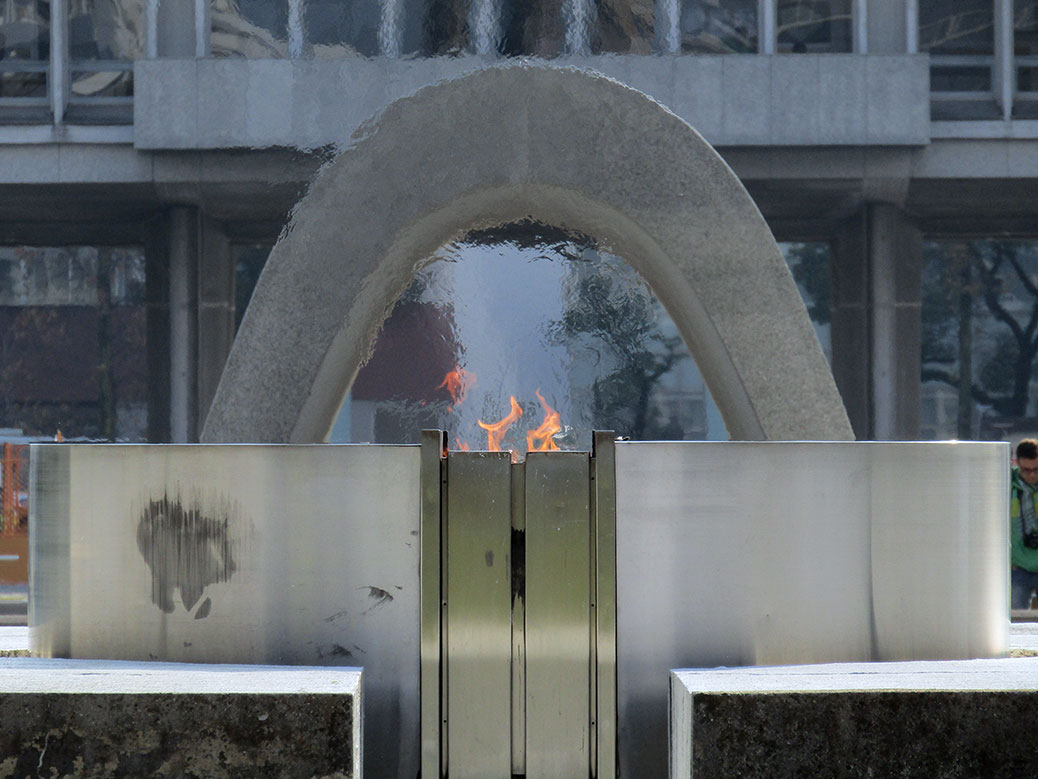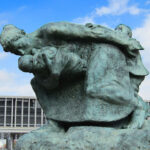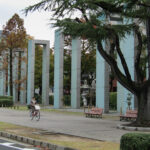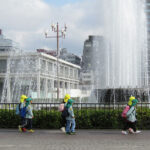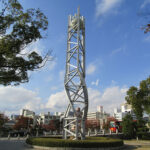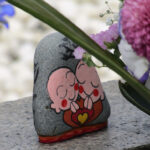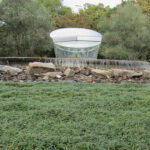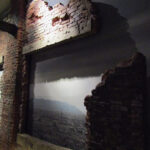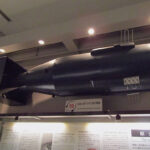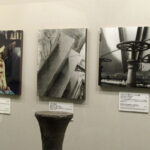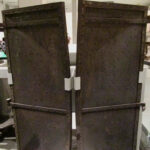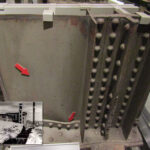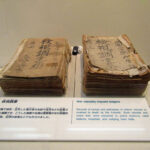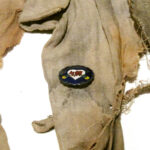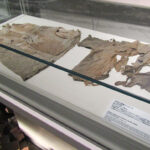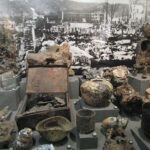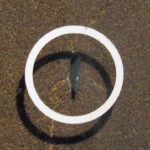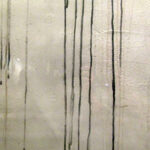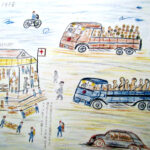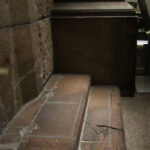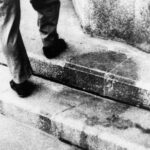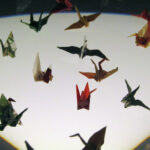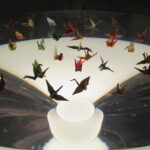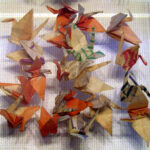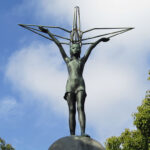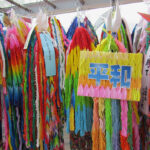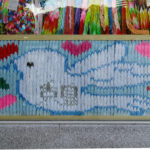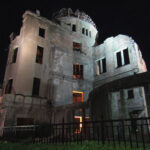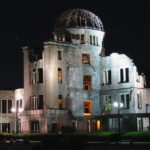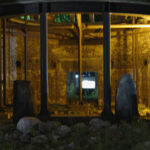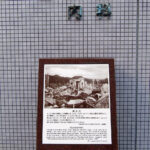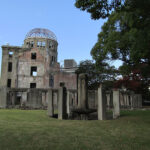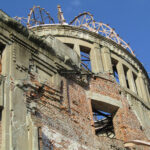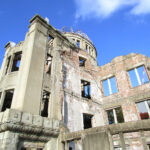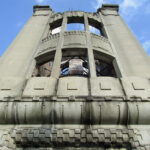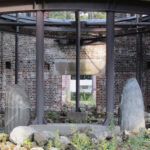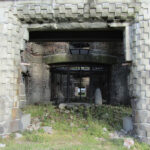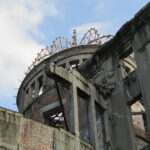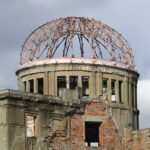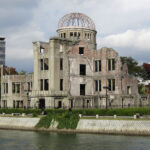How do you think about the unthinkable? From a young age, I’ve been fascinated by Hiroshima. In grade school, I read a book adaptation of the 1983 television movie The Day After. While the movie/book focused on a fictional Cold War nuclear attack, it stirred a desire to learn more about what happened in the world’s first real atomic bombing.
In middle school, I did a presentation on Hiroshima. It involved a diorama and an egg cracked from a foot above, representing the mechanics of the bomb. I showed photos of the “human shadows” that I found in library books. The flash of the bomb was so bright it bleached the concrete, leaving a dark “shadow” of anything in between, including people. It was pretty heavy stuff for an 11-year-old.
Sometimes I worried whether having an interest in something so horrible was normal, but it turns out it’s at the core of who we are as humans. Research shows that witnessing the suffering of others triggers our deepest sense of compassion. It’s almost as if it is happening to us. It’s why events like the assassination of John F. Kennedy, the September 11 attacks and the recent events in Paris capture our attention so thoroughly.
History in Shades of Gray
History seems like something that should exist in black and white. An event occurs, it’s recorded and that’s that. In reality, history lives in shades of gray, colored by the perspective of those who experienced it.
It’s also stained with the hues used by those who write it.
Over the years, I’ve read accounts from the crew of the Enola Gay, the bomber that dropped the bomb on Hiroshima. I’ve read the justifications from politicians of the time as well as the opinions of modern day pundits. The most common argument is that the bomb saved lives by ending the war prematurely. On August 9, the day the second bomb was dropped in Nagasaki, U.S. President Harry Truman said:
We have used [the atomic bomb] in order to shorten the agony of war, in order to save the lives of thousands and thousands of young Americans.
True, the war did officially end with Japan’s surrender to Allied forces less than a month after the bomb fell on Hiroshima. But in reality, the U.S. had very strategic reasons for dropping the bomb on Hiroshima in particular.
Hiroshima had not been subject to repeated bombings unlike Tokyo, Yokohama or Toyama. It would be easier to determine the destructive power of the bomb on a pristine target. Once Hiroshima was confirmed as a target, all planned air raids were canceled to keep the city intact.
Hiroshima had several military targets thanks to its location on the sea. But more importantly, U.S. intelligence (incorrectly) determined there were no Allied prisoner of war camps in the city. However, at least a dozen American POWs were killed in the blast, a fact not acknowledged by the U.S. government until the 1970s.
The most significant consideration may have been the Soviet Union’s decision to enter the war against Japan. The U.S. utilizing the atomic bomb had as much to do with thwarting the opportunity for Soviet influence in the region as it did with “saving lives.”

The Story of the Bomb
We tried our best to create balance in our Hiroshima visit, knowing that the day at the Peace Memorial Park would be a weighty one. We ate okonomiyaki, drank sake and visited historic and beautiful Miyajima. But absorbing the atrocities of the bomb were an important part of the visit.
Just 50 yen (40 cents USD) gets you in the doors of the powerful and well-done Peace Memorial Museum. English-speaking tour guides offer their services for free. The guides are volunteers who have a connection to the bomb in some way. Our guide’s father lived just outside the city in 1945 and was exposed to radiation in the days that followed. He still qualifies for the special government health care pass for Hiroshima victims.
Click any photo in the gallery to see a larger version and start a slideshow view
The museum is special not only for its contents, but also for its role in redeveloping the area around the hypercenter of the bomb. Construction of the museum and surrounding park began in 1952, focusing on remembering the victims in a way that promotes ongoing peace in the world.
The aim of the museum isn’t to paint America in a poor light. This museum is about peace going forward while making sure future generations don’t lose sight of the realities of what happened on August 6, 1945.

Inside, the first image you encounter is a wall-sized photo of the mushroom cloud, taken by the crew of the Enola Gay an hour after they dropped the bomb. It’s followed by snapshots taken by amateur photographers from outside the city. Even in a city that had grown used to air raids, there was a sense that this one was different.

The realities of the destruction and the toll on human life are presented in provocative detail. Crumbling brick walls line the hallways. A scene backlit in a fiery red shows women and children walking through the rubble, their clothes hanging in tatters and their skin literally melting off of their bodies. Sadly, this isn’t done in exaggeration, but in historical accuracy.

A scale model shows the size of the fireball caused by the explosion in comparison to the city below. It’s massive and unimaginable. The shockwaves and firestorms flattened the entire city.

Photos from inside the city on the day of the bombing are rare. According to our guide, there are only three, taken by photographer and Hiroshima resident Yoshito Matsushige. Matsushige recognized the importance of the moment, snapping a photo of a family reuniting outside a makeshift relief center. Other memories of the days surrounding the bombing are thoughtfully captured in drawings from those who survived.
Click any photo in the gallery to see a larger version and start a slideshow view
The physical artifacts carry the most weight. Remnants of school uniforms burned off the children who wore them. Small details are left intact, like a school pin attached to a shirt collar. A metal lunch box with a child’s lunch still inside, burned to an unidentifiable black mass.
Click any photo in the gallery to see a larger version and start a slideshow view
Sumimoto Bank donated the steps of its Hiroshima branch. The steps show one of the aforementioned “human shadows.” It’s thought to belong to a customer sitting on the steps waiting for the bank to open. A dark spot still remains, its owner vaporized by heat of the 10,830°F blast. In an instant, humans disappeared from the face of the planet leaving nothing but a dark spot on the ground.

Shinichi’s Tricycle
One of the more touching stories accompanies a rusted tricycle belonging to 3-year-old Shinichi Tetsutani. Shinichi was riding his beloved toy in front of his home on the morning of the bomb. He was badly burned by the flash and died later in the day.
Shinichi’s father felt his son was too young to be buried alone, so he buried his boy and the tricycle in a grave in the backyard. Forty years later, Shinichi’s father recovered his son’s remains and moved them to the family cemetery. The tricycle was donated to the museum.

Children’s Peace Monument
One of Hiroshima’s most famous stories belongs to Sadako Sasaki. Sadako was the inspiration for Sadako and the Thousand Paper Cranes, a children’s book written by American author Eleanor Coerr. The real-life Sadako was 2-years-old on the day of the bombing, living just over a mile from the hypercenter. The force of the blast sent the toddler through a window of the family home. Her mother found her outside, apparently unharmed.
Click any photo in the gallery to see a larger version and start a slideshow view
Nearly 10 years later, Sadako developed an acute form of leukemia and was given a year to live. While in the hospital, she met another girl just a couple years older than herself who told her the legend of senbazuru. Anyone who folds 1,000 paper cranes would be granted a wish.
In all, she folded more than 1,400 cranes, some as small as a housefly, before losing her battle in October 1955. Her classmates folded 1,000 cranes that would be buried with her. The paper crane is now a popular symbol for peace in Japan and around the world.
In 1958, the Children’s Peace Monument was unveiled in the Peace Memorial Park. Sadako is on the top, holding one of her cranes. During our visit, groups of children passed through to ring the bell which, of course, has a bronze crane attached to its chain. Around the outside, display cases hold thousands of paper cranes that have been folded by children around the world and donated to the park.
Hiroshima Today
Today’s Hiroshima resembles most other major Japanese cities, built and rebuilt since the 1950s and full of office buildings, shops, restaurants and parks. Yet, Hiroshima’s history always contains a dark footnote.

- Hiroshima Castle was constructed in the 1950s, but was destroyed by the atomic bomb and rebuilt in 1958.
- The Prefectural Industrial Promotion Hall opened on August 5, 1915, but was destroyed by the atomic bomb. The rubble has been preserved as the Atomic Bomb Dome.
- The historic Shukkei-en Gardens were designed in 1620, but suffered extensive damage by the atomic bomb and were renovated in 1951.

- Fukuromachi Elementary School opened in February 1873. 160 students and teachers were killed by the atomic bomb. It reopened in May 1946 with 37 students.
To experience Hiroshima in person is to have the most effective history lesson possible. Hiroshima wasn’t a city full of military personnel; it was a city of families. Mothers. Fathers. Brothers. Sisters. It was people going about their daily lives in the midst of a World War. Fishermen and businessmen. It was a city of people whose lives were destroyed in a literal instant.
But it’s also a city of hope, literally built on the mistakes of the past. It’s living proof of the resiliency of people in spite of the evils carried out in the name of war and righteousness. Hiroshima is a lesson that should never be repeated, but should be learned from over and over again.

